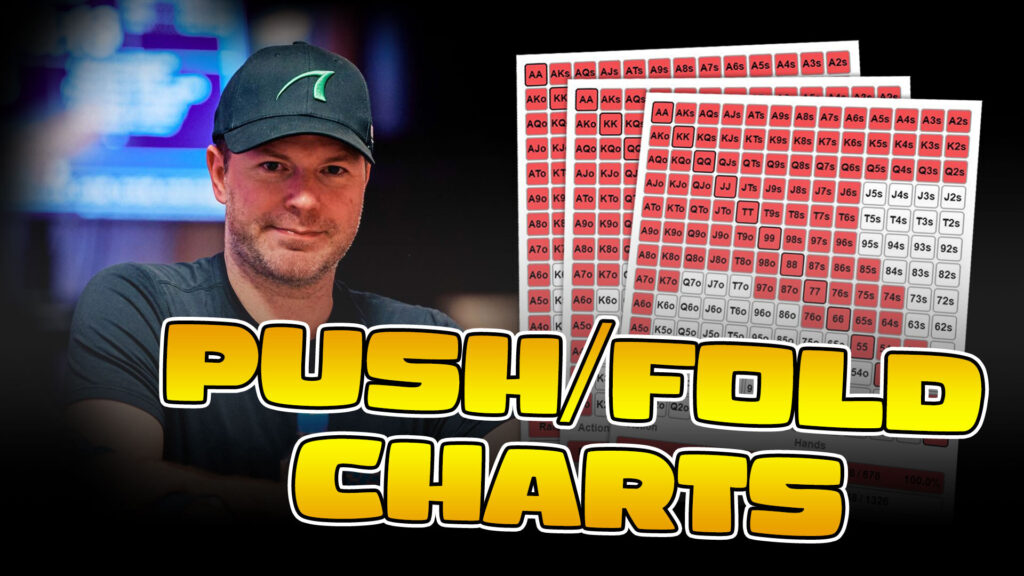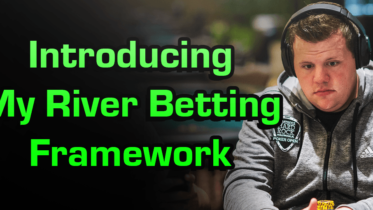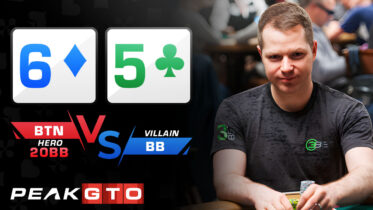In today’s article, I want to discuss developing a reliable framework to use when facing aggression on the river. The river is different than other decisions in poker as we have the most complete information. In my own game, I have worked on implementing a framework, or almost a question, to help organize the information gathered in the hand so far. Today, we will look at why we want to have a framework for river decisions and how to implement them into your game.
- Handling Tough River Decisions
- Question One: Does My Hand Beat Any Value Bets?
- Question 2: Are We Incentivized To Bluff Catch?
- Question 3: How Capable Is My Opponent Of Bluffing?
- Question 4: Wil The Average Poker Player Under Or Over Bluff?
- Question 5: Do You Have Relevant Blockers To Bluff With?
- Conclusion
Handling Tough River Decisions
Consistently when playing poker, especially live, when I see someone facing a tough river decision, you see the blank stare in their eyes. It is quite easy to tell when someone is thinking in depth on the river. They are calculating the pot odds, bluffing frequencies of the opponent, and how do their cards interact with the villain’s value and bluffing range. It is also quite easy to tell when someone has cob webs going on in the brain.
They are clearly just sitting there taking time, thinking “Is he bluffing?” “I have top pair” “This spot really sucks” “Should I call” “This kid has been bluffing all day”. None of these thoughts help lead to an effective river decision, this is why we need frameworks to go by in poker. We need a checklist to go by to help guide our decision making process. Our goal is to be able to make the best possible decision given the information provided by us, with a framework that will help us in organizing and analyzing that information.
In some respects, river decisions are the toughest in poker. They are often for the most money and additionally they are difficult as they often produce large polarizing bets which put us in difficult decisions. In other aspects, river decisions can be the easiest in poker. Equities are now solidified as no more cards will be coming out, and we no longer need to be planning ahead in the hand. We have also now (hopefully) narrowed the opponents range to the smallest in any part of the hand. This framework should be implemented when facing river aggression and you are closing the action in the hand. Your framework doesn’t have to be the same, this is just one that I find effective for myself.

Make the best preflop decisions with Jonathan Little’s Push/Fold Charts!
Question One: Does My Hand Beat Any Value Bets?
Here we need to assess how wide the villain will bet for value. Often, if we can beat hands betting for value, we should call with our holding. If we can no longer beat value bets, our hand is now officially a bluff catcher. If our hand is now a bluff catcher we move to that part of the framework.
If we can beat value bets, we need to decide if we should call or raise. This is fairly simple process. If we raise, will we win more than 50% of the time when villain calls, that means we need to beat more than 50% of his value bets assuming he calls with all his value and folds all his bluffs. Versus tight opponents, we need to beat more value hands to raise since the opponent will likely overfold.
Question 2: Are We Incentivized To Bluff Catch?
To calculate proper bluffing frequencies, look at the pot odds being offered to you. If the opponent bets full pot, you are being laid 2-1 odds on your call. Your opponent must be bluffing 33% of the time and have 1 bluff for every 2 value bets. If your opponent bets ½ pot, your opponent must be bluffing 25% of the time and have 1 bluff for every 3 value bets. When your opponent bets 2x pot, he must be bluffing 40% of the time as you are getting 1.5-1 on your call.
Question 3: How Capable Is My Opponent Of Bluffing?
You need to freeze everything at some point and analyze your opponent. You are not just looking at if your opponent is aggressive or passive, given the line taken, does he have enough natural bluffs here? Try to think of specific combinations your opponent could be bluffing with here. Is this opponent’s tendency to over or under bluff in situations?
Question 4: Wil The Average Poker Player Under Or Over Bluff?
By population, we mean the average player you play against. For example, in my experience, board pairing rivers are extremely under bluffed. Also 4 flush and 4 to a straight board tend to be under bluffed by population.

Read one of the highest regarded articles on the PokerCoaching.com blog: The Bankroll Bible
Question 5: Do You Have Relevant Blockers To Bluff With?
Value – Do we block any relevant value hands in opponents range? Key word is relevant
Bluffs – Do we block any relevant bluffs in our opponents range? Key word is relevant.
While we should strive to complete the entire framework for every river decision, you will begin to realize with practice that after a while you will quickly find out decisions.
For example, if we beat no value and the villain rarely bluffs and bets full pot, we can often just fold ALL our bluff catchers and just call with hands that beat his value. We do not need to move onto looking at our blockers and exploits, we already came to the correct conclusion in the process. However, if we are up against a very tough, aggressive opponent who can find the tough bluffs, we need to move onto assessing our blockers to find the best bluff catching hand.
In my experience, most players start with considering blockers and work their way up the process. Their process is backwards, and should start with considering what hands their opponent is betting for value. Starting the process at blockers leads to irrational decisions and bad calls without completing your process. This is the simple “Well I’m at the top of my range, or I have my best bluff catch, I have to call.” None of this thought process matters if the villain never reaches the proper bluffing frequencies. By learning to start from the top of the framework and move down, we help avoid irrational decisions before completing the thought process.
Conclusion
This process will take a while when you are first implementing it into your game. After lots of practice though, this process can take as little as five seconds. You will make better river decisions without slowing down the game. Develop other frameworks in your game for preflop, flop and turn to help your decision-making process mature.
Best of luck at the table
Matt




